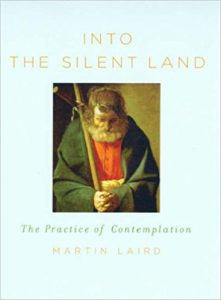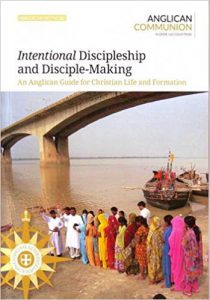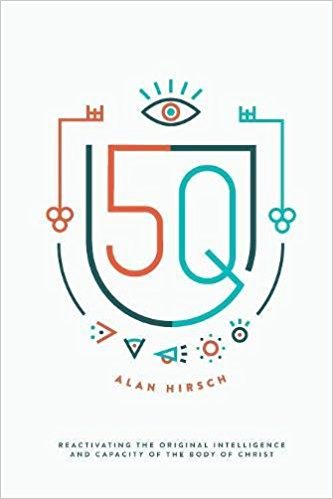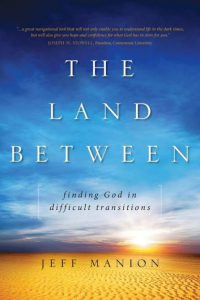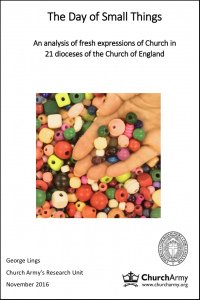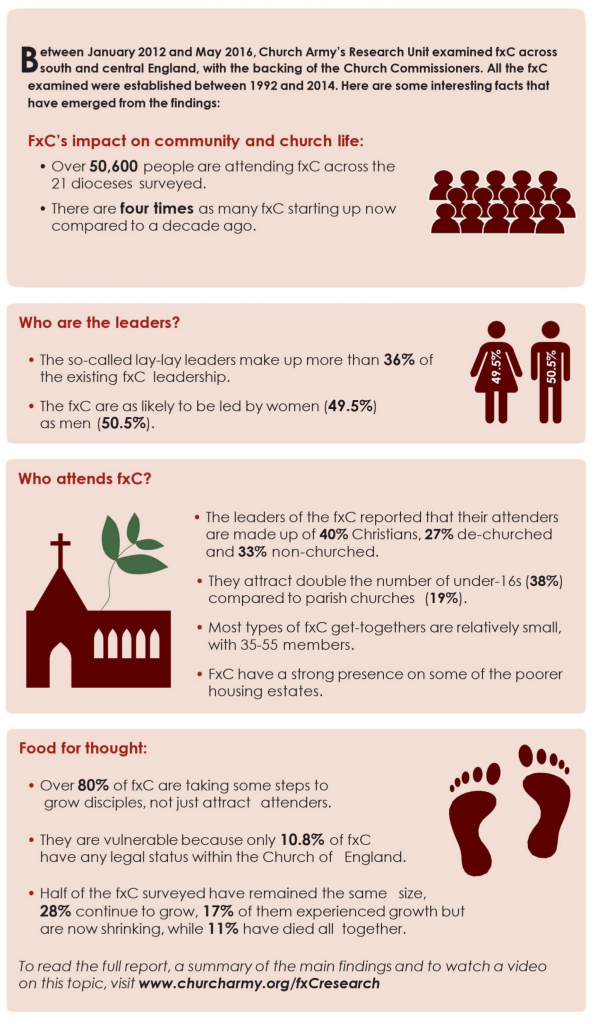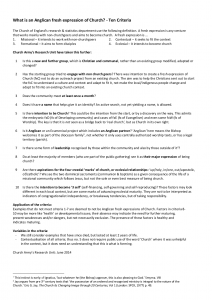Review: Recovering From Churches That Abuse
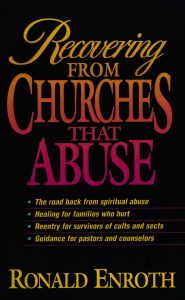 Churches can be hurtful. Whether it be the institution, the community, or individuals within them, they can wound, manipulate, damage, and neglect. This is no new thing. Recovering from Churches That Abuse was written by Ronald Enroth in the early 1990’s. It’s been on my bookshelf for almost 20 years, but, for various reasons, I have only now found the right time to read it.
Churches can be hurtful. Whether it be the institution, the community, or individuals within them, they can wound, manipulate, damage, and neglect. This is no new thing. Recovering from Churches That Abuse was written by Ronald Enroth in the early 1990’s. It’s been on my bookshelf for almost 20 years, but, for various reasons, I have only now found the right time to read it.
For church leaders the topic of church abusiveness can be painful, awkward, and emotionally complex. It’s like reading a book on parenting for those of us who have children. There is a complex mix of feeling the pain of our own childhood and our own imperfect parents, of feeling the pain of our own mistakes and many flaws, and of fear about the fact that more mistakes will likely happen in the future! Similarly, I have been hurt by the church, I have been (along with all my colleagues) a flawed and broken church leader, and sometimes the way ahead seems more fraught than hopeful.
Which gives all the more reason to thoughtfully and deliberately engage with this topic.
Enroth’s book may not have been the best place to start. It is anecdotal more than it is analytical, a “life-history approach to illustrate patterns of spiritual and emotional abuse” (page 137). Its focus is on situations where the level of abuse is extreme, blatant, and cult-like. There is some use in seeing dysfunction in the extreme, but it’s not always helpful when reflecting on the “ordinary” hurts of the everyday church.
Nevertheless, there is some wisdom to glean. In what follows, I simply outline the echoes of some of these stories in my own experience, and also the useful insights that Enroth bring.
1) Points of resonance:
Although the anecdotes are often of extreme situations, we can connect them with more “normal” circumstances as well. I have heard some of the language Enroth shares being used by those around me. I have used some of it myself. There are points of resonance.
For instance, Enroth quotes someone as saying “I woke up one morning and realized that I had not thought my own thoughts for three years” (page 33). I hear similar from those who may have left a mainstream church that has a strong and particular view of their own mission. It’s the experience of buying into someone else’s mission until it reaches a point where the secondhand faith becomes a collapsing foundation. When a mission-driven church doesn’t also exercise the right interplay of freedom and formation and focus on real people, pain results.
Similarly, we read words like this: “One of the things that has been most distressing to me is to see the way the church can discard people the way you throw an old banana peel out of the window with no apparent care for them” (page 33) and language that appeals to God’s will as a means of control or deflection. I’ve seen what it’s like to be on the receiving end of interpretations of God’s will as a means of ameliorating rejection: “I’m so glad you’ve found the place where God actually wanted you to be…”
I’ve reflected in the past about the disillusionment of those who are “done” with churches which are increasingly “self-referential.” Enroth shares stories in which “members will be requested to serve, to become involved, to sign up for a variety of activities that, upon closer inspection, appear designed to maintain the system” (pages 31-32). I know what it’s like for the direction of the church rut to be about “helping the vicar do his job” and nothing more. I understand the painful passivity of those for whom “it is hard to be a part of anything anymore” (page 46).
As I read through Enroth’s anecdotes, a thought crossed my mind: There are many situations in which church members are not ill-treated, but in which church staff come away damaged. It’s a point of concern, because there is a growing tendency to “professionalise” vocational work and assess ministry via bureaucratic markers. It’s telling that Enroth refers to abusive communities as “performance-based” (page 17, 44) a number of times. I have seen too many church workers broken by impossible performance measures, mediocre remuneration and support, and spiritualised reasons as to why they should grin and bear it.
Indeed, I have sometimes reflected on the fact that the mechanisms for abuse that Enroth’s stories reveal (financial dependence, the priority of institutional reputation over personal injustice, spiritualised language to assert authority, and gaslighting condescension as decisions are made for you and not with you), cohere to the relationship between most clergy/pastors and their institution. If these mechanisms are not proactively countered by good oversight, their abusiveness inevitably emerges.
2) Helpful learnings:
Where Enroth does provide some analysis, it is helpful.
For instance, he raises the question of “How can we discern an unhealthy, abusive Christian church or fellowship from one that is truly biblical, healthy, and worthy of our involvement?” (page 27ff). His answer references the psychological health of members, of whether or not people are isolated from families, or discouraged in “independent thinking” and “individual differences of belief and behavior.” We learn of “legalistic churches” exhibiting an often-hypocritical emphasis on “high moral standards” and which allow no external accountability.
Throughout, he also raises aspects of church life in which good things are twisted to achieve bad outcomes.
For instance, there is no doubt that the Scriptures are a source of life, and truth, and a revelation of God’s love, grace, and presence. Yet, from an abusive situation in which “if you questioned Scripture you were made to feel very guilty” (page 22), even the beauty of Scripture can be hidden in pain and trauma. It is similar with some of the precious doctrines of Christian theology, e.g. the Lordship of Christ, the atoning sacrifice of the cross. These can be mishandled into guises of dominance and guilt-inducing wrath.
I am learning to see it for myself. I can tell when words, that have been life-giving for me, walk into clouds of darkness in someone else’s eyes. I have encountered Scripture and the truths of Christian doctrine as refuges, places of safety and sustenance when the church has otherwise left me starving in the dark. For others, they have been instruments of control. As they begin to move towards healing, they can come close to throwing out the baby of truth with the bathwater of pain. Enroth doesn’t give any great insight into how to address this tension, but nevertheless declares:
The survivor must be assured of God’s unfailing grace and be able, in effect, to rediscover the gospel. (Page 43)
We thought we were Christians, but despite years and years of being in Christian groups, neither of us knew Christ at all. Neither of us knew how to depend on Christ. (Page 61)
I have found a number of them who have difficulty with or even an aversion to reading the Bible because it has been misused by the group to abuse them. Learning the proper application and interpretation of Scripture goes a long way toward healing the wounds of abuse. (Page 66)
Victims must be able not only to rebuild self-esteem and purpose in life, but also renew a personal relationship with God…. it is possible to have a rich relationship with God… the victim must be turned “to faith in the living God from faith in a distorted image of him.” (Page 67)
Day by day we had to put one foot in front of the other and say, “Jesus, I have been a disciple of my denomination. I have been a disciple of my church. I have been a disciple of my pastor. I want to be your disciple and follow you.” (Page 84)
I now have a church where the pastor leads us to Christ, not to himself. (Pages 139-140)
Similarly, another twisted “good” is the concept of spiritual family. For myself, the concept of family is life-giving – a place of refuge, warmth, and formation. I have found that individualism is a lonely place, a form of sterile functionalism in which no one has your back, a capitalist vision of Christianity in which the body only moves together as a collective of coincidentally aligned self-actualised individuals. I resonate with Mike Pilavachi of Soul Survivor who speaks passionately and rightly about the need for church to be family rather than business.
I am learning, however, that even language of “family” can resonate with people’s trauma. Dysfunctional families eradicate individual differentiation so that identity is lost. The language of spiritual parenting has also been used to manipulate and control and attaches to the abuses of so-called “shepherding” (page 55, 143). We need to redeem that language with care.
It takes time to work through this language barrier. It is possible to have healthy church family, and to share common goals, and to find oneself as part of a larger whole, and to have appropriate formation and discipline. “The intensity of relationships within an abusive group must be matched by intense relationships in a wholesome setting” (page 65). It requires a context of love, and grace, and warmth, and acceptance. At times it requires some particular leadership skills, which I am aspiring to discover. For those of us who inhabit a leadership, pastoral, or even therapeutic role, we need to to understand how the mistrust of us is not personal, but a natural wariness “of allowing another authority figure into their lives” (page 64).
It is useful, therefore, to see how Enroth takes us to some of the pathways that lead to healing and restoration. It involves overcoming a “shame-based identity” (page 37) and mistrust.
By learning to trust again, the victims of abuse also discover that they can tolerate and trust themselves, an important part of the recovery experience (page 40).
Simply by describing this journey, Enroth helps us. I understand what it is like to go through a season of regret over “the lost years” (page 44) of giving away health, wealth, and youth. Similarly, the journey through “anger and rage” (page 128) and bitterness, away from “pointing the finger” (page 78) and talking about “what had happened to me” (page 112), is difficult but necessary. The four stages of “role exit” (page 116ff) of those who leave an abusive situation is illuminating. The summary of “mending” (page 140) is helpful.
They need to understand that their significance is not in what they had, but it is in their relationship with Christ. They have lost a few years, but they have not lost their soul. (Page 130)
In conclusion:
Enroth has helped me listen to my own internal pain. If find something of myself when he quotes Johnson and VanVonderen who write:
There is no test to diagnose spiritual abuse. There are only spiritual clues: lack of joy in the Christian life; tiredness from trying hard to measure up; disillusionment about God and spiritual things; uneasiness, lack of trust, or even fear…; a profound sense of missing your best Friend; cynicism or grief over good news that turned out to be too good to be true. (Pages 138-139)
If nothing else, Enroth has shown that such painful journeys are “far more prevalent and much close to the evangelical mainstream than many are willing to admit” (page 139).
I remain perplexed and moved. In my real world, I am frequently running into those who have been left bleeding, and who have reached the same end as some of Enroth’s stories: “[W]e will never get what we need from a church. It is going to be our family and the Lord, and we have to get that relationship right. There is not going to be a church suited for people who have our backgrounds…” (Page 99). How to help, how to serve, how to bless, from a church leadership role that looks like what has hurt them before? This remains my question, my conundrum, and my prayer.
Recovery means trusting in the God of grace, the God of endless years. Remember the promise made to Israel in Joel 2:25: “I will repay you for the years the locusts have eaten.” (Page 145)


